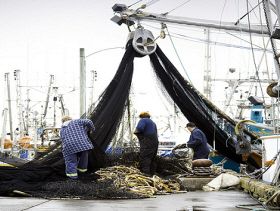 cess of the closed season in Zamboanga last year against overfishing, the Bureau of Fisheries and Aquatic Resources (BFAR) is closing fishing activities in the entire Davao region this June.
cess of the closed season in Zamboanga last year against overfishing, the Bureau of Fisheries and Aquatic Resources (BFAR) is closing fishing activities in the entire Davao region this June.“We are enforcing a closed season for the Davao gulf from June to August of this year, to allow for the small pelagic species like the galunggong [roundscad], hasa hasa and sardines,” BFAR national director Asis G. Perez told reporters on Monday.
An attached agency of the Department of Agriculture, the BFAR is still studying the case of Palawan, reports BusinessMirror.
But for next year, a similar temporary ban on fishing will be declared also in the area, according to Perez.
A pelagic zone refers to an area in a sea or lake that is neither close to the bottom nor near the shore, which hosts important commercial fish species.
The sardine closed-season bid in Zamboanga peninsula has significantly increased sardine catch since its implementation three years ago, Perez said.
He added that for the last three years, his office has been receiving reports of an increased volume in sardine production.
Perez based this on testimonies gathered by his staff from fisherfolks, as well as sardine operators.
“The measure will also protect the tuna population because tuna feeds on small pelagic [species],” Perez explained, noting the decline in tuna production in the Davao gulf in the past three years. However, when asked to comment on the 3.25 per cent contraction in the fisheries subsector in the first quarter of 2014, Perez pointed to Supertyphoon Yolanda.
The storm wrecked havoc last year, destroying thousands of fishing boats and gears, hence, the reduction in fisheries output, the BFAR chief explained.
With 74 per cent of the coastal towns and cities in the Central Philippines affected, reduced production was noted among all species, except the skipjack, based on the first quarter agricultural report by the Bureau of Agricultural Statistics. BFAR estimates Yolanda’s damage to the fisheries sector at almost P2 billion.
“We are still lucky that the contraction is not that big despite 26 percent of our total production areas affected by Yolanda,” Perez said.





